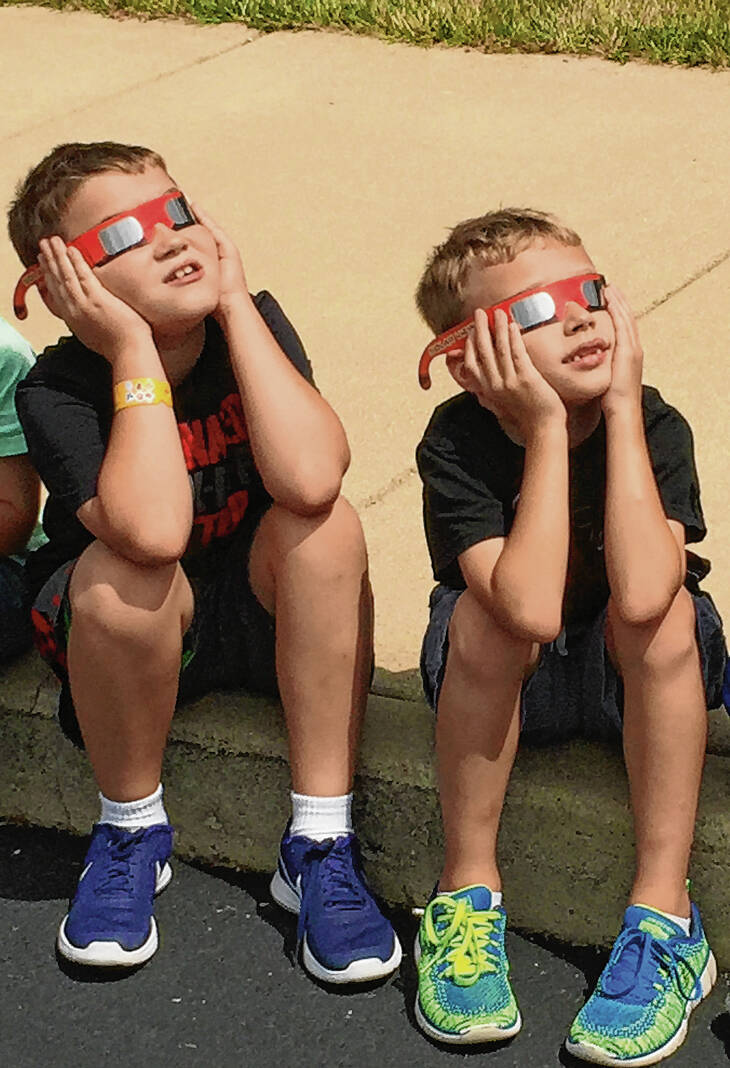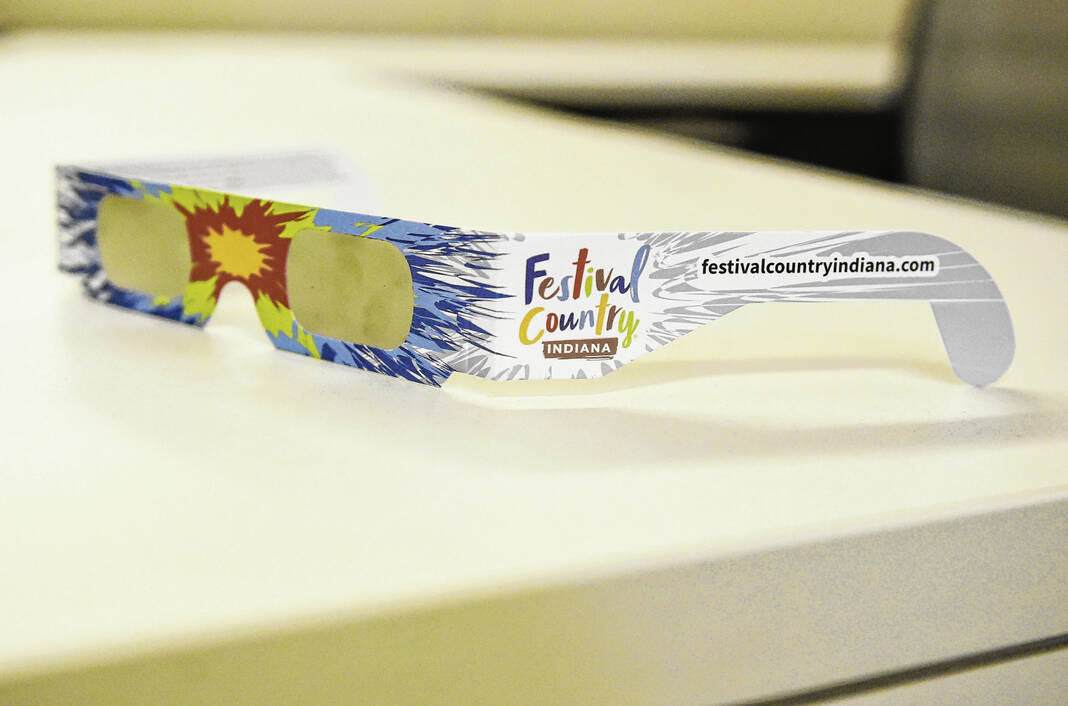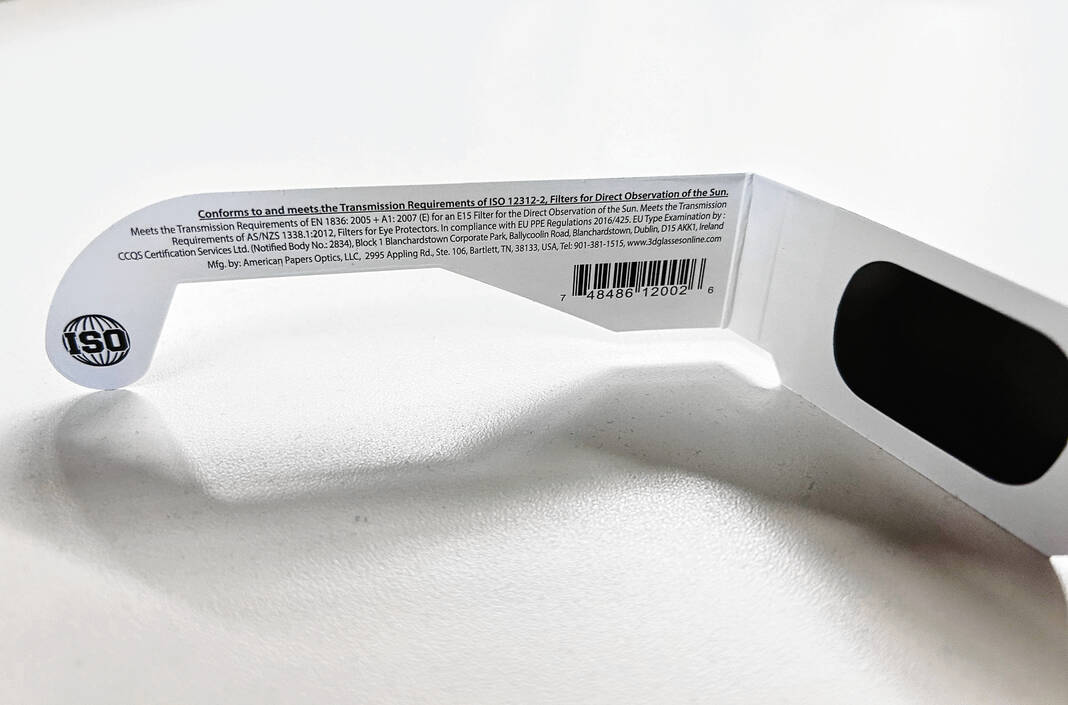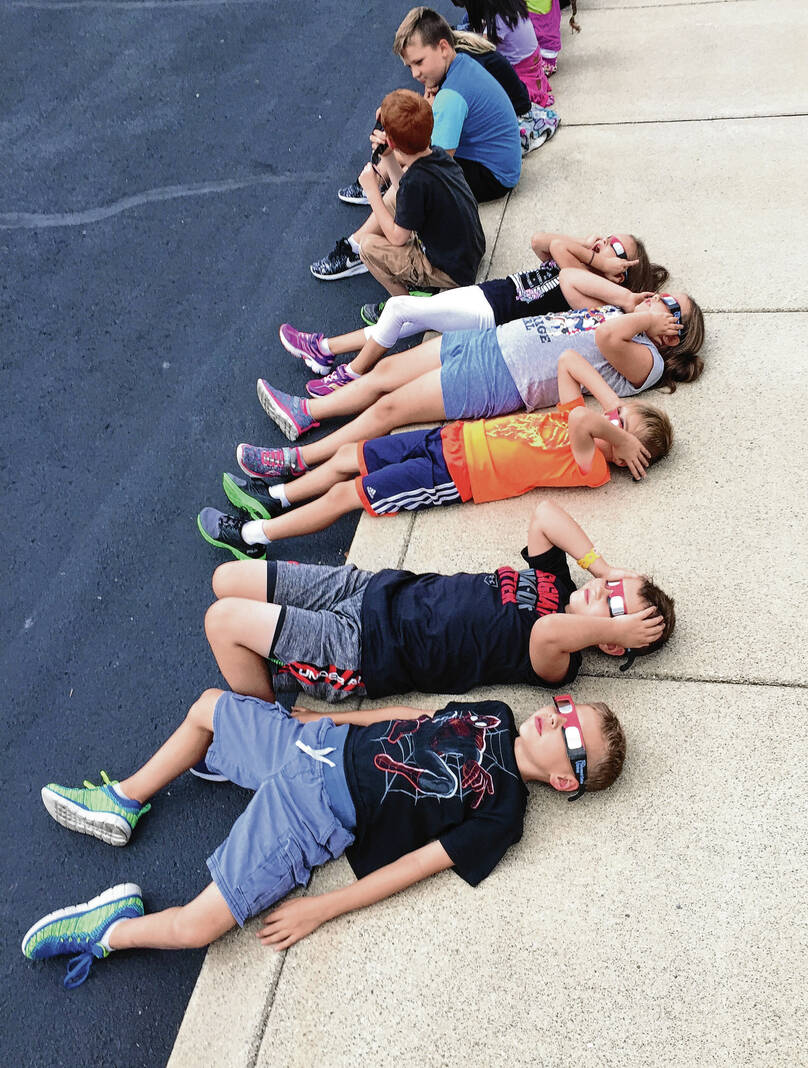All eyes will be on the sky on April 8.
With Johnson County falling completely within the path of totality during the total solar eclipse, people will crane their heads up to see the celestial show unfold.
But they better be ready to protect their eyes, medical professionals say.
“We want to get the word out there, as best we can, that people need to be safe — especially children,” said Guy Langston, practice administrator at Frechette Eye Center in Franklin.
No one wants to miss the total solar eclipse, a once-in-a-lifetime event that won’t happen again in central Indiana until 2153. But to prevent eye injuries and safely see the moon pass in front of the sun, eye doctors are emphasizing the need for protective eclipse glasses or an eclipse viewer.
The only time it’s safe to take off the glasses and look up at the sun is when the eclipse has reached totality, which only lasts for a few minutes.
People can permanently injure their eyes and damage their vision even just briefly looking at the sun, said Dr. Hin Cheung, a clinical assistant professor at the Indiana University School of Optometry.
“The longer you look at the sun, the more damage will occur. Photochemical damage is cumulative. Staring at the sun for short periods at a time does not protect you; the damage from each viewing adds up,” he said in a release from Indiana University. “This may cause temporary or even permanent changes to your central vision, which most of us rely heavily on for everyday tasks from driving to watching TV, playing catch to threading a needle.”
As April 8 approaches, Dr. Linda Frechette and the staff of Frechette Eye Center have been posting eye safety information on its social media, as well as reaching out to patients and reminding them to take safe steps.
“We did a mass-mailing to all of our patients,” Langston said. “We offered free (eclipse) glasses to all of our patients, if they want to come by the clinic and pick them up. We want to get that protection out to everyone.”
Still, the staff is prepared to field phone calls following the eclipse for people who may have suffered eye damage.
“We may get some calls later that day — ‘my eyes are hurting,’ or they didn’t use protection and they don’t know what to do,” Langston said. “Hopefully, there won’t be too many of those calls.”
Eclipse glasses are made with special lenses that block a majority of harmful rays from the sun, allowing people to look directly at the sun. Viewed through the lens, the sun appears more like a full moon, according to the American Astronomical Society.
Eclipse viewers have special filters that block out the harmful levels of light and radiation from the sun and allow only a small fraction of that through the filter — limited solar ultraviolet A and B radiation to a maximum of 0.0032%, and solar infrared radiation to a maximum of 3%.
“Such filters are at least 1,000 times darker than even the darkest sunglasses,” said Rick Fienberg, project manager of the American Astronomical Society Solar Eclipse Task Force and a veteran of 14 total solar eclipses.
Viewers or glasses must be in compliance with the requirements of the International Organization for Standardization to be considered safe. Specifically, there should be clear labeling on the viewer that says ISO 12312-2, sometimes written as ISO 12312-2:2015.
Unfortunately, counterfeit and fake eclipse glasses are flooding the market in advance of the April 8 eclipse, according to the American Astronomical Society Solar Eclipse Task Force. The task force has put together a list of brands that they have tested to be reputable and safe.
“There’s no way to tell just by looking at them whether eclipse glasses are genuinely safe, but it’s easy to tell if they are not safe,” Fienberg said.
Festival Country Indiana, the county’s tourism bureau, has been planning for the eclipse since 2017. Foremost on their preparations was securing more than 100,000 pairs of eclipse glasses to distribute to residents and visitors, said Kenneth Kosky, executive director for Festival Country.
Because you can’t safely look at the partial eclipse without ISO-certified eclipse glasses, they felt it was their responsibility to stockpile them for people.
“We wanted to make sure, whether you’re a resident or a visitor, you have access to glasses and can enjoy this event safely,” Kosky said.
Glasses are still available for free at the Festival County Visitor’s Center in downtown Franklin, and they anticipate having enough for residents and visitors through the eclipse, Kosky said.
They’re also helping with instructions on how to best use the glasses.
“During the partial eclipse, they recommend you look at the sun in increments of three minutes — three minutes on, then take a break, then three more minutes and so on,” Kosky said. “Then during totality, you don’t need the glasses at all.”
AT A GLANCE
Eclipse eye safety
Looking directly at the Sun without proper eye protection is unsafe except during the brief total eclipse phase, or totality.
This happens only within the narrow path of totality. At all other times, it is safe to look directly at the sun only through special-purpose solar filters, such as “eclipse glasses,” that comply with the transmittance requirements of the ISO 12312-2 international standard. Ordinary sunglasses, even very dark ones, are not safe for looking at the sun.
Remove your solar filter only when the moon completely covers the sun’s bright face. As soon as the sun begins to reappear, replace your solar filter to look at the remaining partial phases.
Always inspect your solar filter before use; if scratched, punctured, torn, or otherwise damaged, discard it. Read and follow any instructions printed on or packaged with the filter.
Always supervise children using solar filters.
If you normally wear eyeglasses, keep them on. Put your eclipse glasses on over them or hold your handheld viewer in front of them.
Stand still and cover your eyes with your eclipse glasses or solar viewer before looking at the bright sun. After looking at the sun, turn away and remove your filter — do not remove it while looking at the sun.
Do not look at the uneclipsed or partially eclipsed sun through an unfiltered camera, telescope, binoculars, or other optical device. Do not do so even while wearing eclipse glasses or using a handheld solar viewer in front of your eyes — the concentrated solar rays could damage the filter and enter your eyes, causing serious injury.
Solar filters must be securely attached to the front of any telescope, binoculars, or camera lens. Seek expert advice from an astronomer before using a solar filter with a camera, telescope, binoculars, or any other optical device.
Find safe vendors of eclipse glasses at: eclipse.aas.org/eye-safety/viewers-filters
Information from the American Astronomical Society









